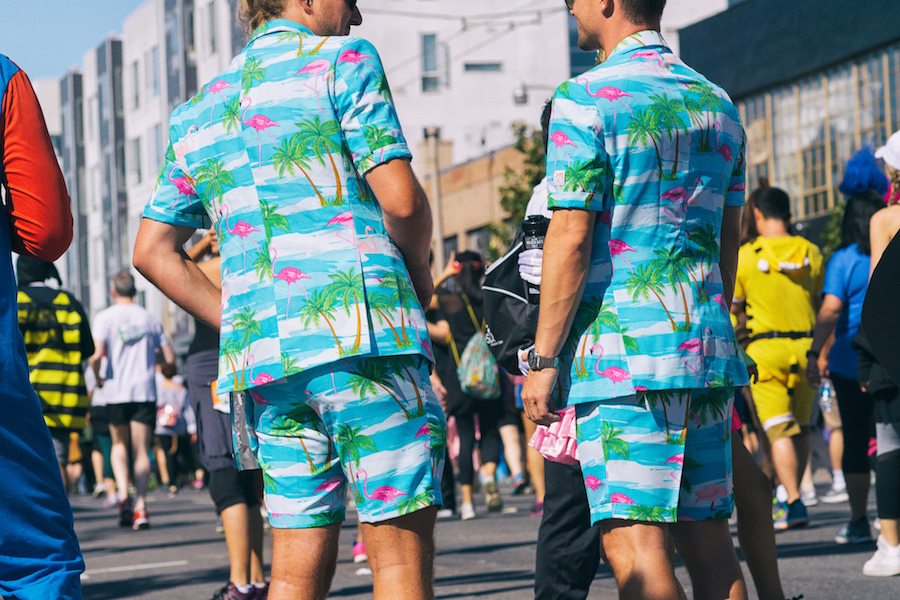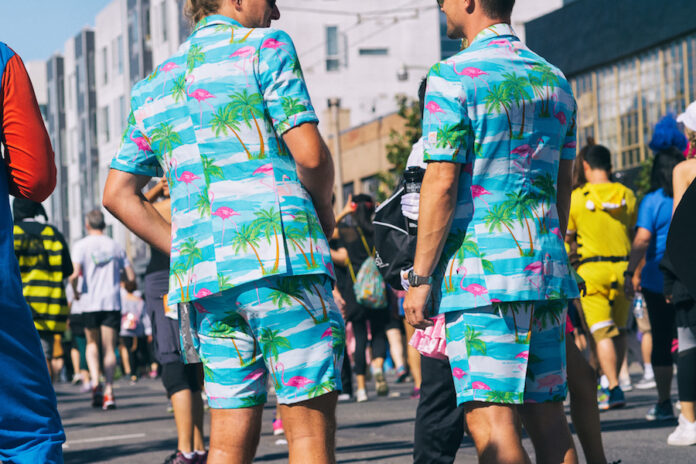

There have been many fashion trends throughout the years that define each generation and its respective cultural identity. But what constitutes the Millennial generation’s typical fashion choices, and how do these express its culture and identity? Navigating through the decades starting with the 1940s, we’ll examine why certain fashion trends spoke to specific generations and why some of these have reemerged in the Millennial generation.
In 1945, the Baby Boomer generation was conceived partly to celebrate the defeat of tyranny and oppression in the world. This newfound liberation paved the way for more progressive fashion, as seen in the notion of menswear for women — even though the country had only given women the vote 20 years prior. The previously controversial off-the-shoulder dresses, wartime garb, drawn-on leg stockings and bikini (thanks, grandpa and grandma!) provided women a more prominent voice in fashion trends. Meanwhile, cat-eye sunglasses, swim caps and bullet bras just scream 1950s. It’s clear that Americans in the ‘50s were expressing themselves more liberally as a continuation of the ‘40s.
Winklepickers (Google them for a laugh), pillbox hats, babydoll dresses and the “psychedelic trend” reflect the expressive and radical Swinging Sixties. Despite the trials and tribulations of the ‘60s, the country remained in the world of liberated and expressive fashion before falling into the conservative ‘70s and ‘80s (those poor Gen Xers). In addition to pillbox hats, which should definitely make a comeback, other trends that helped finish off the Swinging Sixties included shoulder dusters (A-line dresses), sculpted hats, patterned tights and leggings and ginormous sunglasses that begged the question: Was everyone allergic to the sun or just crazy?
Hot pants (think ground zero for booty shorts), bellbottoms and platform shoes would usher in much more conservative yet innovative fashion trends into the 1970s. The disco era left young Baby Boomers showing up to the club with the highest shoes and largest afros imaginable. Prairie dresses, muumuus, plaid dresses and floral dresses were the “bee’s knees” and would set the precedent for the Gen Xers on what was radical and tubular.
Defined by aerobics gear, punk, side ponytails, parachute pants and the Jheri curl, the 1980s unfortunately has gone down as one of the most critically panned and scrutinized decades of fashion. Pop stars like Michael Jackson, David Bowie and Madonna catered to progressive Gen Xers with big jackets, big hair and pants that made you look 10 sizes bigger. But there was also another portion of the Gen Xers heading in a different direction. Heavy metal and glam rock would distinguish the ‘80s as not only the pop generation, but the punk or rock generation as well. Neon clothes, acid-washed jeans, shoulder pads and cut-off tees marketing metal bands reigned supreme throughout the decade of rock and pop.
The 1990s was by far my favorite decade — but not in terms of fashion. Overalls, the “grunge” look, JNCO jeans, scrunchies in every ponytail and chokers dominated the last decade of the 20th century, prompting me to ask, ‘Why, God, did I have to grow up in the most confusing decade of fashion yet?’ The mid-to-late ‘90s was the first glimpse that Millennials had into the world of fashion. With Britney Spears introducing the tube top, every guy having frosted tips in his hair and the inception of the “schoolgirl” look, the ‘90s serves as one of the biggest mysteries in American fashion.
What about the last 17 years? Uggs, low-rise jeans and those infamous Juicy Couture tracksuits helped ring in the 21st century. Believe it or not, the “Bag Lady” look was actually a thing during the mid-2010s. Looking disheveled in 2005 was actually considered fashionable. The “unforgiving cousin of skinny jeans,” jeggings also came onto the scene within the past 10 years, along with formal shorts. Whether you agree or disagree with the fashion trends of the past 17 years, one thing remains true: Millennials are living in a quite progressive, individualistic era of fashion.
What about the hot fashion items that will define the “teens” of the 21st century? To my surprise, going braless is becoming one of the most trendy fashion statements in the world today. The male romper has also arrived onto the scene, and hopefully the glorified “romphim” leaves as quickly as it arrived. With a considerable amount of college-aged women and Millennials having one-eighth of their buttcheeks hanging out, it’s clear that Daisy Dukes from the ‘70s are making a comeback, making Baby Boomers more confused about these new alterations of trimming more and more jean to show more and more buttcheek. All in all, it looks like fashion is heading in the right direction — or heading straight to the trash, depending on your personally preferred catwalk look.
Written by: Brody Fernandez — bwfernandez@ucdavis.edu
Disclaimer: The views and opinions expressed by individual columnists belong to the columnists alone and do not necessarily indicate the views and opinions held by The California Aggie.





